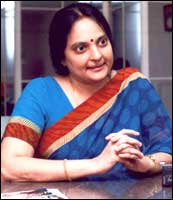Mother India Safer Than Uncle Sam
- Published Date: Jan 17, 2014 6:00 AM
- Last Updated: Jan 17, 2014 1:57 AM
The Discounted Cash Flow (DCF) method for asset valuation uses time value of money principle to bring future cash flows of an underlying asset to present time. The value of a country is the present value of the future cash flows it can generate. The future income expenditure statement and the balance sheet of the USA will look more attractive than India’s and the DCF method values America higher than India. However, a country is an aggregate of its citizens and if the future balance sheet of the Americans is compared with Indians, India’s asset value will be higher than America. The characteristics of citizenry asset differ based on the country’s unique ethos and sociology.
A government’s financial strength and its capacity to leverage with a sovereign promise to repay make its balance sheet appear healthy. Hidden in the externally robust American government balance sheet is the deceptive internal social asset that has symptoms of major collapse. Socio-economically, the balance sheet of Uncle Sam does not adequately reflect the impoverished American families just as ours has failed to adequately appreciate the enriched families of Mother India.
The sequential aggregation of families, communities, societies and states forms a nation’s economy. The global discourse that universalises human behaviour of the West (read America and the UK) and trivial Scandinavian nations whose population is less than Chennai, discards Asiatic living as traditional and not in tune with the times. The discourse doesn’t stop with this branding exercise but extends to an advertising campaign that promotes deviance to mainstream. The economic cost of bringing deviancy to mainstream society is huge. In America, the shocking statistics of single-parent families, high divorce rates, teenage pregnancy, shooting incidents in schools, drug related offences, etc. are symptoms of sociological disorder. Modern tools that measure human development index use cosmetic statistics that hide sociological disorder that has explosive economic costs. Brookings Institute’s Economist Bobsworth’s theory of “dynastic savings & trans-generational wealth” puts the real value of Asian countries like India higher than fictitious values of countries like America.
The Board of Trustees in the 2013 Annual Report of the Social Security Administration have warned of disruptive consequences for American beneficiaries and taxpayers if legislative changes are not made to sustain projected long-term programme costs. The present value of unfunded social security obligations over the next 75 years is close to $10 trillion. Its $23.5 trillion dollars for an infinite horizon.
If Medicare & Medicare drug prescription is included, the figure exceeds $100 trillion. The social security obligation is a ticking time bomb for America and in India an economic cushion because of India’s privatised social security system—privatised by the families, not by statutory compulsion but by dharmic and moral obligation.
The savings appetite of Indian families is an economic goldmine for India. The Goldman Sachs paper Paper No 187 of 2010 estimates that India’s annual cash savings of $800 billion will ensure indigenous supply for India’s $1.4 trillion infrastructure investment requirement for the next decade. For American households, savings is an anathema. According to Sheldon Garon (Princeton University professor and author of Beyond Our Means: Why America Spends While the World Saves) “Americans don’t save much.” The leveraged households owe $11.5 trillion that includes a $2 trillion in credit cards and education loans. American families consider their kids’ college fees as liability and outsource it to a prospective lender. Indian families welcome with open arms similar financial responsibilities because they can make natural economic adjustments to their per capita consumption pattern during tough times and have a fall-back option available from safe-savings. American households’ alcoholic appetite for equity investments and their hyper-consumerism enrich the capital account or the revenue account of corporates and bankrupt families’ social account. With less than 5 per cent of family savings in stock markets and calibrated spending by Indian families, Indian families can and is financing their own and India’s fiscal deficits. This is impossible for Americans and America which rely on global borrowings for local expenses.
As an insurance industry veteran, I see India more insured by Indians than America by Americans. The chief architect of the economic cushion provided by Indian families is the woman. Her social responsibility, calibrated spending and meaningful savings provide financial solidity to Indian families. The economically matured and socially responsive Indian woman assures Mother India safe and secure cash flows in the future. American family assets are in tatters and Uncle Sam cannot be assured of a similar safety net. Result: Asset Value of Mother India is greater than Asset Value of Uncle Sam, thanks to the Indian woman whose economic strength will be the presented during a women’s convention in Chennai organised by Swami Vivekananda’s 150th Women’s Initiative.
The author is managing d irector of Shriram Life Insurance Company Ltd.
